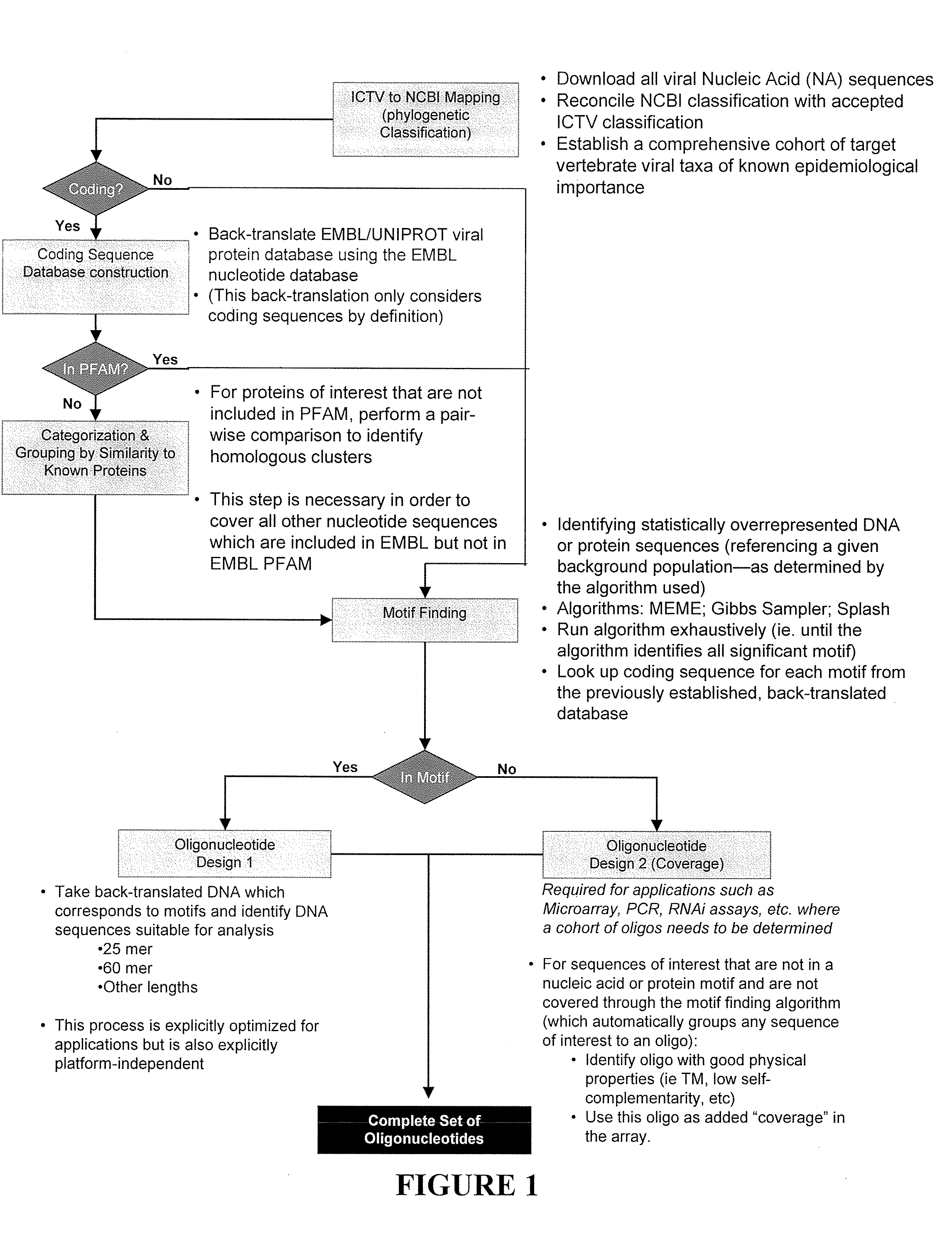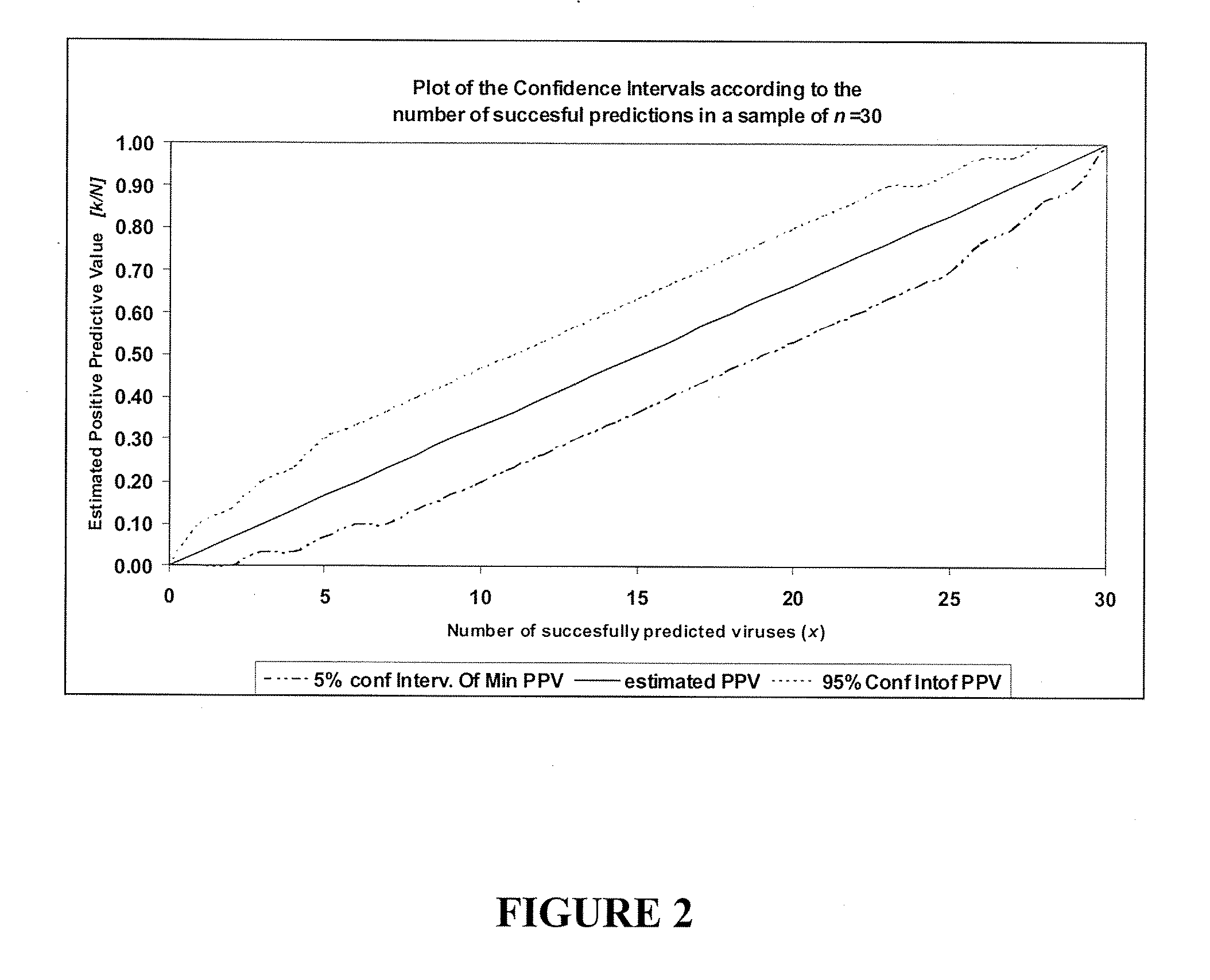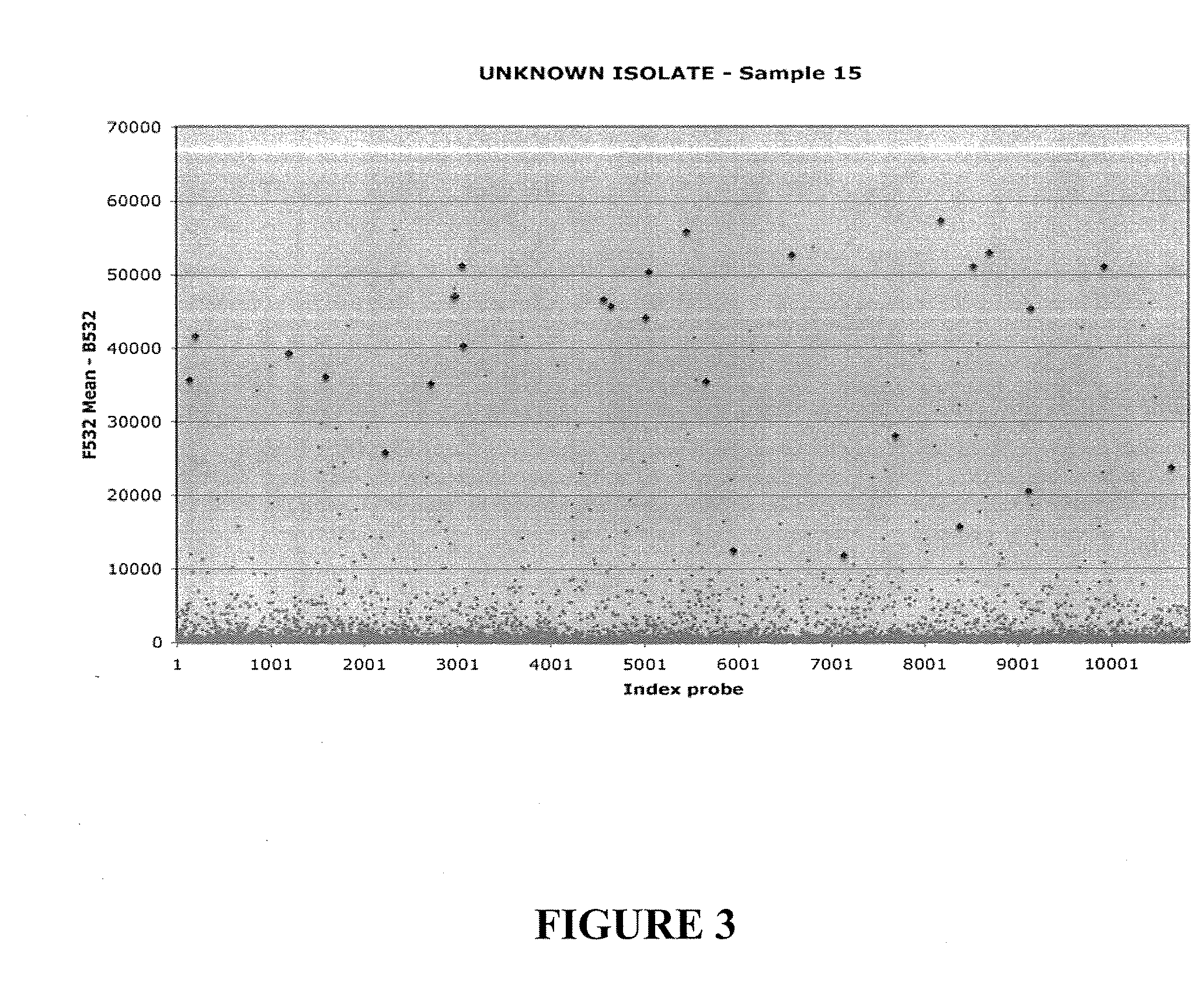Viral database methods
a database and database technology, applied in the field of virtual database methods, can solve the problems of lack of new and ungenerated probes, and achieve the effects of reducing the number of primers and targets, facilitating detection and discovery, and enhancing assay efficiency
- Summary
- Abstract
- Description
- Claims
- Application Information
AI Technical Summary
Benefits of technology
Problems solved by technology
Method used
Image
Examples
example 1
A Vertebrate Viral Database and Microarrays
[0122]Because vertebrate viruses are highest priority for human disease, a vertebrate viral database was first constructed, with a plan to later extend the database to viruses of invertebrates, plants, and prokaryotes. A database was compiled that included (1) every vertebrate virus listed in the ICTV database (ICTVdb), and (2) non-published sequences from private collections (i.e., Centers for Disease Control, etc.). The NCBI database is not exhaustively curated; thus, it contains many entries where annotation is missing, outdated, or inaccurate. An additional difficulty is that only incomplete sequence is available for many viruses where genomic sequencing efforts have received less emphasis or data are confined to networks focused on biodefense and emerging infectious diseases (e.g., WHO network and Department of Defense laboratories).
[0123]To circumvent limitations in curation and nomenclature in the NCBI database, and to eliminate the ...
example 2
Protocols for Microarrays of the Invention
[0136]The below protocols refer to the “GreeneChip,” but the methods of the invention can be generally applied to design oligonucleotide microarrays of the invention.
[0137]Method of Recovery of Viral Sequences From Greenechips
[0138]The specificity of hybridization signal can be tested by eluting and sequencing viral cDNA hybridized to arrays. In experiments using WNV, SARS, and Sindbis isolates, cDNAs ranging from 200 to 1000 nucleotide were obtained. GreeneChips can display a minimum of 3 or more probes representing different genomic regions for each virus; thus, this method allows rapid sequence characterization and phylogenetic analysis. The protocol is straightforward and does not require complex equipment; it can be readily implemented in clinical or field laboratories. A silicon gasket can be applied to the slide to define a well over the array. 200 ml of water is placed in the well at 65° C. for 10 min. The water containing the eluted...
example 3
Maintenance, Updates, Testing and Software of a Vertebrate Viral Database
[0159]The software can be designed to establish, implement and validate bioinformatics tools and databases to support microarray design and updates.
[0160]Design and Implement Software for Extracting Viral Sequence Updates
[0161]The rapid evolution of pathogens, particularly RNA viruses such as influenza, may compromise detection even by oligonucleotide microarray technology. Thus, the methods of the invention allow a continuous updating of databases and oligonucleotide sets. A key advantage of the Agilent mask-less printing technology is that GreeneChips can be rapidly modified at no additional cost. Thus, if needed, new versions of the GreeneChip can be introduced on a monthly basis.
[0162]Integration of Public and Proprietary Sequence Data to Create a Comprehensive Viral Database
[0163]Access to viral sequences that are neither published nor deposited in public databases can provide a more comprehensive database...
PUM
| Property | Measurement | Unit |
|---|---|---|
| temperature | aaaaa | aaaaa |
| temperature | aaaaa | aaaaa |
| Tm | aaaaa | aaaaa |
Abstract
Description
Claims
Application Information
 Login to View More
Login to View More - R&D
- Intellectual Property
- Life Sciences
- Materials
- Tech Scout
- Unparalleled Data Quality
- Higher Quality Content
- 60% Fewer Hallucinations
Browse by: Latest US Patents, China's latest patents, Technical Efficacy Thesaurus, Application Domain, Technology Topic, Popular Technical Reports.
© 2025 PatSnap. All rights reserved.Legal|Privacy policy|Modern Slavery Act Transparency Statement|Sitemap|About US| Contact US: help@patsnap.com



